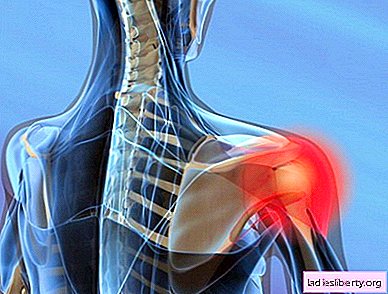
Rheumatism - systemic inflammatory disease with predominant localization of the pathological process in the membranes of the heart. Rheumatism develops in persons pre-assigned to it, most often at an early age, affecting children from 7 to 15 years. A feature is that the course of the disease itself is quite slow and almost always invisible to the patient.
Modern medical literature interprets rheumatism as "acute rheumatic fever." But in everyday life, people often understand by this term any diseases of the musculoskeletal system, but this does not reflect the essence of the disease. At present, about 4% of the world's population suffers from rheumatism, mainly children, they account for about 70% of the total.
Rheumatism is the cause.
In the zone of increased risk of rheumatism, in addition to children at a young age, there are women, or those who have problems with the connective tissue of internal organs.
Factors that can lead to the development of rheumatism:
-genetic predisposition (if your relatives are sick with rheumatism, then it means you definitely have a predisposition to it at the genetic level)
- scarlet fever (it can be infected by airborne droplets, as well as through household items)
- finding foci of infection in the nasopharynx (this is for diseases such as tonsillitis, chronic tonsillitis, and also chronic pharyngitis)
-infection with β-hemolytic group A streptococcus (streptococci of this group are distinguished from others by high resistance to chemical and physical influences from the outside)
Rheumatism - symptoms.
The initial symptoms of rheumatism will begin to appear a few weeks after a cure for sore throat or pharyngitis. But some people risk getting sick in 1-2 days after hypothermia.
You may have rheumatism if:
-rapid pulse
-the body temperature is close to 40 degrees Celsius (but in special cases it may not exceed 37)
increased sweating
-prostration
- swollen joints (at first the largest and most used ones begin to hurt).
Rheumatism - diagnosis.
There are currently no specific methods for diagnosing rheumatism.
Laboratory tests can reveal the level of antibodies in the body. High titers in an anti-streptolized test indicate rheumatism disease. But in the early stages of the disease, the level may be within the acceptable range. In such a situation, tests of other streptococcal antibodies should be performed.
Another way to detect rheumatism is to isolate group A streptococci. Crops are taken from the patient's airways. This is used if it is necessary to confirm a recent streptococcal infection.
Rheumatism - treatment and prevention.
An important place in the fight against rheumatism is its prevention. After each case of a sore throat, a monthly follow-up of the doctor after the illness is required. From an early age it is worth hardening your body.
During the attack of rheumatism, the patient must comply with bed rest, the duration of it is determined by the attending physician.
Painful ointments, compresses, or ultraviolet radiation can be applied to diseased joints. The diet of patients with rheumatism should be more rich in proteins, and carbohydrates should be radically limited.
It can be treated medically with: salicylic sodium, amidopyrine, acetylsalicylic acid (aspirin) at the doses prescribed by the doctor, butadion, cortisone and ACTH (adrenocorticotropic hormone).
Also, rest on the shores of warm seas has a healthy effect on the body during interictal periods.











